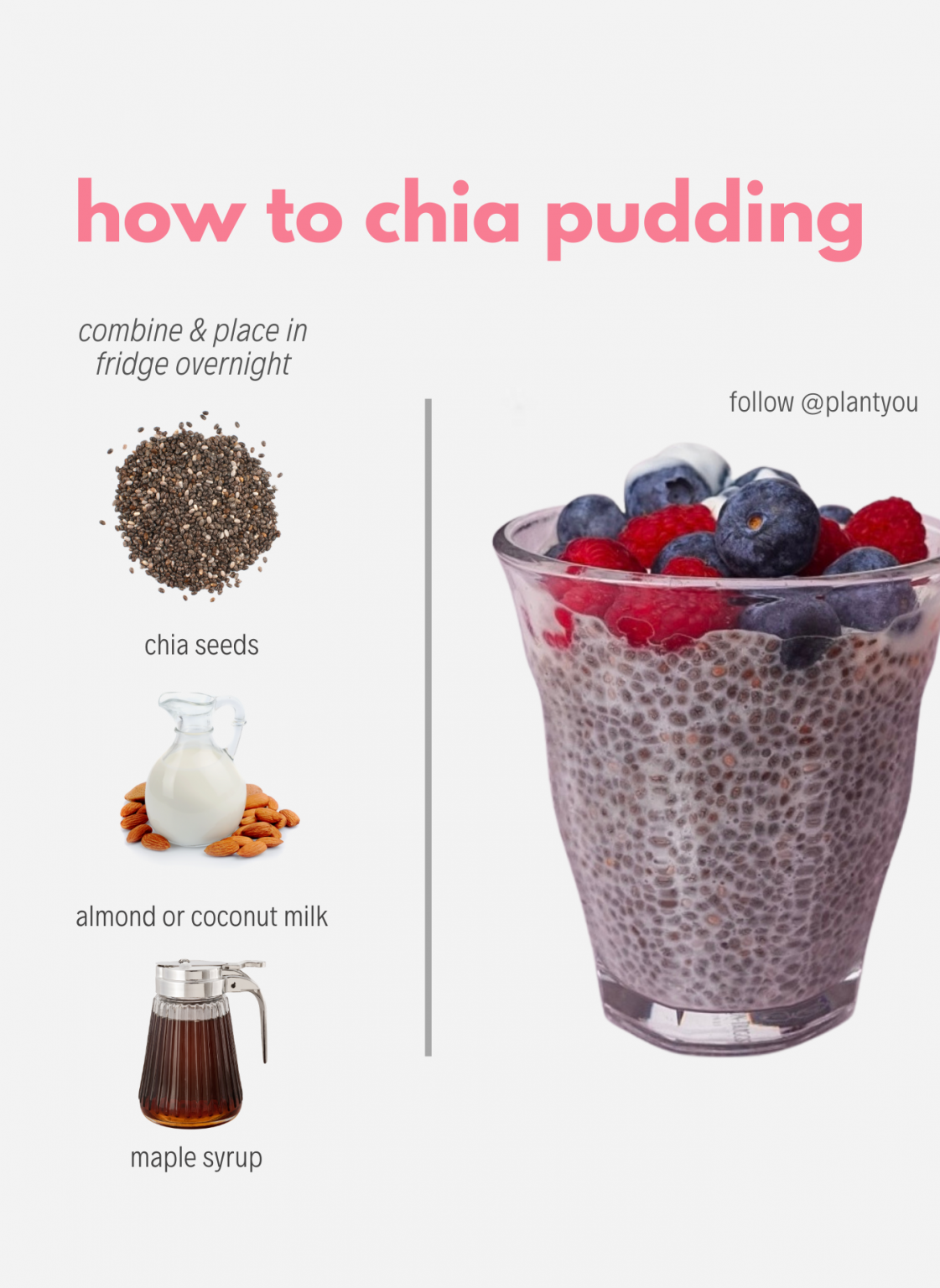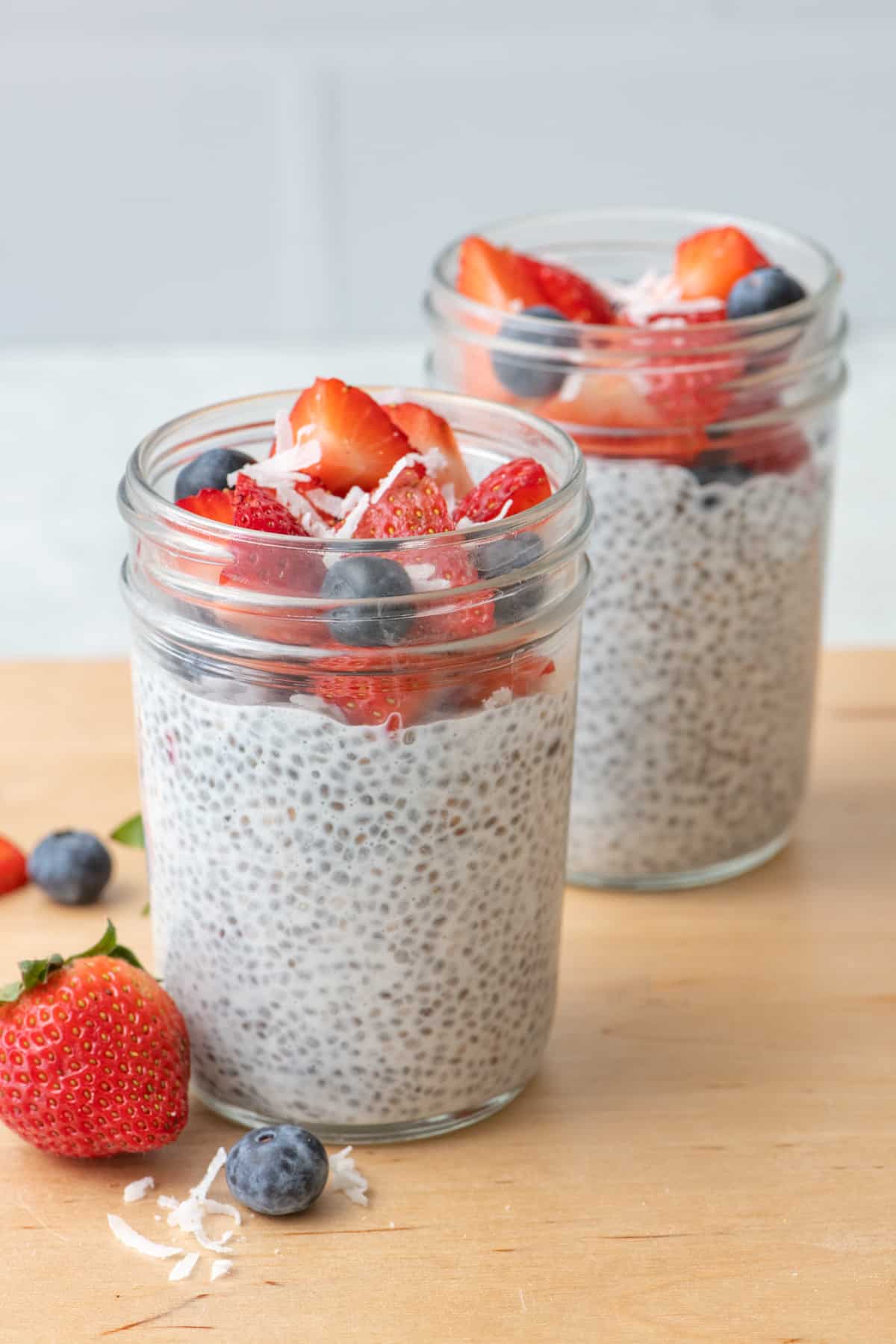What if a single dish could provide a wealth of nutrients, offer incredible versatility, and even potentially aid in weight management? Chia seed pudding, a seemingly simple concoction, packs a nutritional punch that belies its effortless preparation, making it a modern breakfast or snack champion.
The allure of chia seed pudding extends far beyond its convenience. This adaptable treat, born from the tiny, nutrient-dense chia seed, has captured the attention of health enthusiasts, dietitians, and culinary adventurers alike. Understanding its nutritional profile is the first step to appreciating its potential. Consider that in just a cup of this pudding, you can get an impressive array of vitamins, minerals, fiber, and beneficial fats.
Before we dive deeper into the complexities of its nutritional content, its preparation, and its potential benefits, let's take a step back. Chia seeds have been a staple in the diets of ancient civilizations, cherished for their purported energizing qualities and ability to sustain through periods of exertion. Now, backed by modern scientific research, the nutritional advantages are becoming clearer.
This article seeks to unravel the secrets of chia seed pudding, offering a comprehensive overview of its caloric content, macronutrient breakdown, potential health benefits, and creative variations. We will also delve into the details of how to incorporate this pudding into a balanced diet.
| Nutrition Facts: Chia Seed Pudding (Per 100g, approximate) | |
| Calories | 106-388 (depending on ingredients and serving size) |
| Protein | Approximately 4-34g (depending on ingredients and serving size) |
| Carbohydrates | Approximately 8-74g (depending on ingredients and serving size) |
| Fat | Approximately 19-86% (depending on ingredients and serving size) |
| Fiber | Significant, varies widely with additions (e.g., berries) |
| Calcium | Present, depending on milk choice and chia seed content |
| Magnesium | Present, depending on ingredients |
| Omega-3 Fatty Acids | Present, particularly from chia seeds |
| Other Vitamins and Minerals | Varies, depending on additions (e.g., vitamin C from berries) |
| Additional Notes | Values will vary widely based on the specific recipe used and serving size. The "macronutrient breakdown" percentages (carbs, fat, protein) are estimates and fluctuate with recipe variations (e.g., using different milks, sweeteners, and toppings). Fiber content is often exceptionally high. |
The nutritional profile of chia seed pudding is flexible, affected significantly by the components incorporated within the recipe. Using a plant-based milk such as almond milk or coconut milk impacts fat and calorie counts. Adding fruits (berries, bananas), sweeteners (honey, maple syrup), and additional toppings contribute to the overall composition.
A typical serving of chia seed pudding made with almond milk and chia seeds, could be considered low in calories compared to some desserts and other breakfast choices. Depending on ingredients, a 16-ounce portion may range from 193 to 330 calories. This makes it a potentially excellent choice for those wanting to control their caloric intake. Also, recipes with fruits may include other vitamins such as vitamin C, and high fiber levels.
Let's examine the basic components, like chia seeds, on their own, two tablespoons of chia seeds weigh about 28 grams and contain around 138 calories. They also contain 7 grams of protein and 15 grams of fiber, and are very filling when combined with liquid such as almond milk, or yogurt. The recipe is very low in saturated fat, with a substantial amount of fiber, and significant amounts of calcium and iron.
Chia seeds are renowned for their impressive ability to absorb liquid. This capacity, allowing them to swell up to 12 times their original volume, is a key attribute. That characteristic is what helps create the pudding's distinctive gel-like consistency. It's also what makes them so useful in baking, keeping baked goods moist.
The creation of chia seed pudding follows a simple principle: chia seeds combined with a liquid of your preference. The most common choices include water, or plant-based milks (almond, coconut, soy, etc.) These are the foundational ingredients that blend to yield the thick, satisfying texture. Adding flavors like vanilla extract can enhance the experience, while honey or maple syrup provide sweetness.
The most basic recipe involves mixing chia seeds with your chosen liquid, a touch of sweetener (optional), and perhaps some vanilla extract. The mixture is then refrigerated. After some time, the chia seeds will have absorbed the liquid, transforming into a pudding-like consistency. Toppings such as berries, nuts, seeds, or chocolate chips can be added to personalize the pudding. The simplicity is part of its appeal: it's easy to make and adjust to one's preferences.
Different recipes have varying characteristics. If using regular coconut milk, one serving might supply about 86 calories, whereas a serving from a popular cafe like Freshii could provide about 330 calories. Macronutrient breakdowns also differ. One might have around 23% carbs, 70% fat, and 8% protein; while another could be 33% carbs, 58% fat, and 9% protein.
Chia seed pudding shines as a flexible culinary canvas. The options for flavor enhancement are almost boundless. Vanilla extract, cocoa powder, and a range of fruits and nuts can be incorporated, offering a range of tastes. The addition of mixed berries with almond milk results in a naturally sweetened pudding, while a sprinkle of cinnamon and pecans can provide a warming taste.
Consider a recipe for chocolate chia pudding. Using cocoa powder, you can transform the pudding into a rich, satisfying treat. Another variation includes blending fruit (such as strawberries, blueberries, or raspberries) with the milk before combining with the chia seeds, yielding a pudding with vibrant fruit flavors.
Many people incorporate chia seed pudding into their diet to manage weight. Research suggests that chia seeds may support weight loss. The fiber content contributes to satiety, which can help reduce overall calorie intake. Combining this with a low-calorie recipe can lead to significant changes. However, it's important to remember that all foods should be included in a balanced diet for health.
To assess how much energy one needs to burn off, compare it with other foods. A serving of chia pudding might contain approximately 232 calories. Burning off 200 calories could involve activities like brisk walking, jogging, cycling, or swimming, the duration of the activity varies depending on intensity.
Chia pudding's popularity derives from the combination of taste and health benefits. Its versatility makes it a satisfying option for various people. The significant fiber, protein, and healthy fat content make it a nutritious choice. When paired with a balanced diet, it can support a healthy lifestyle. From a simple recipe to more complex ones, chia seed pudding provides both enjoyment and nourishment.


